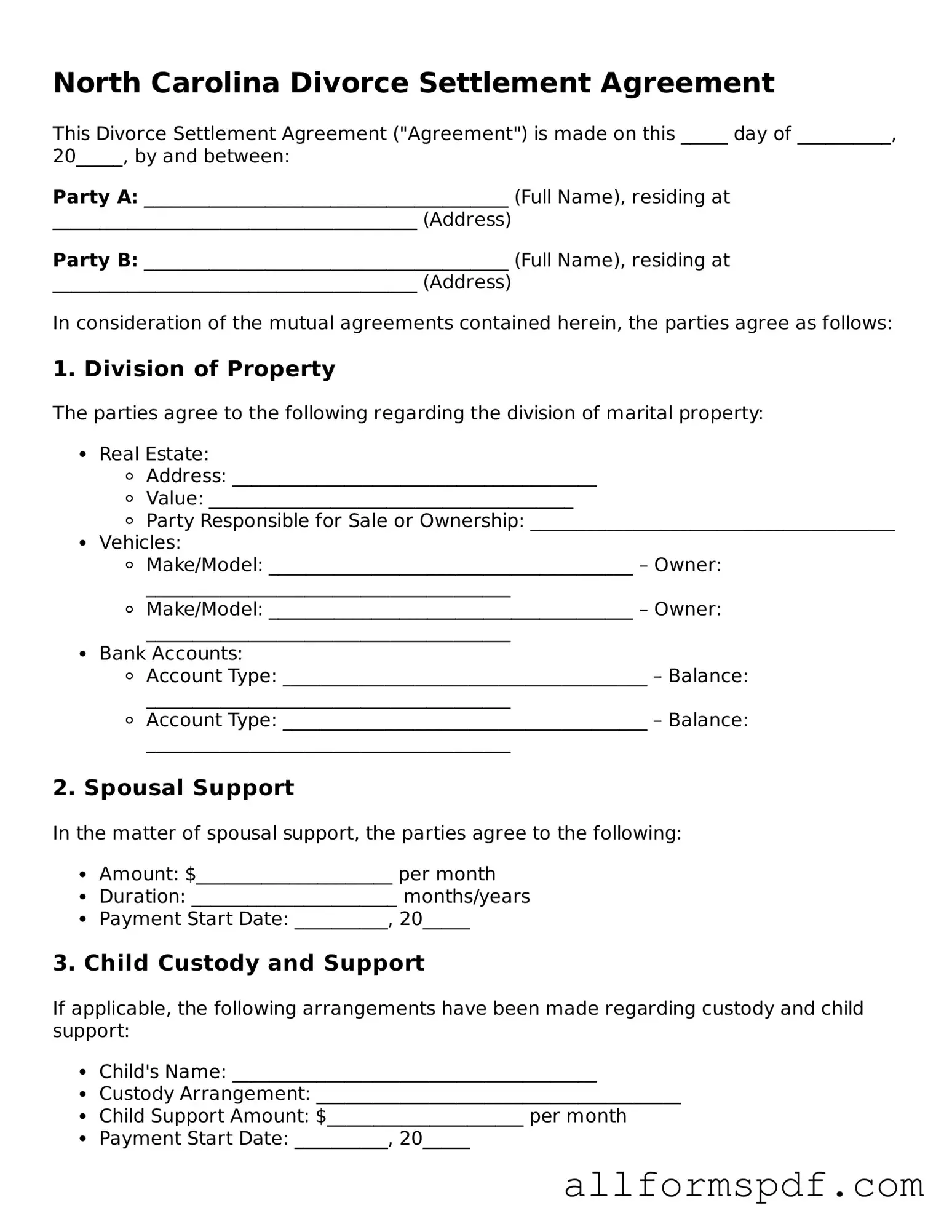Filling out the North Carolina Divorce Settlement Agreement form can be a challenging task. Many individuals make common mistakes that can lead to delays or complications in the divorce process. Understanding these pitfalls can help ensure a smoother experience.
One frequent error is not providing complete information. Each section of the form must be filled out thoroughly. Omitting details, such as financial information or property descriptions, can result in the court requiring additional documentation or even rejecting the agreement.
Another mistake is failing to review the form for accuracy. Simple typos or incorrect figures can create significant issues. It is crucial to double-check all entries to ensure that they reflect the agreed-upon terms accurately.
Many people overlook the importance of signatures. Both parties must sign the agreement for it to be valid. Missing signatures can delay the process and require additional court appearances.
Misunderstanding the terms can also lead to errors. Individuals may not fully grasp the implications of certain clauses, resulting in agreements that do not align with their intentions. Seeking clarification on any confusing terms before signing is essential.
Another common mistake involves not considering future changes. Life circumstances can change, and agreements that do not account for this can become problematic. It is wise to include provisions for future modifications if necessary.
Some individuals neglect to attach required documents. Supporting documentation, such as financial statements or proof of income, may be necessary for the court's review. Failing to include these can lead to delays in processing the agreement.
Another error is not consulting with legal counsel. While it may seem straightforward, having a lawyer review the agreement can help identify potential issues and ensure that both parties' rights are protected.
Lastly, individuals may rush through the process. Taking the time to carefully consider each aspect of the agreement can prevent mistakes that could have lasting consequences. A thoughtful approach can save time and stress in the long run.
